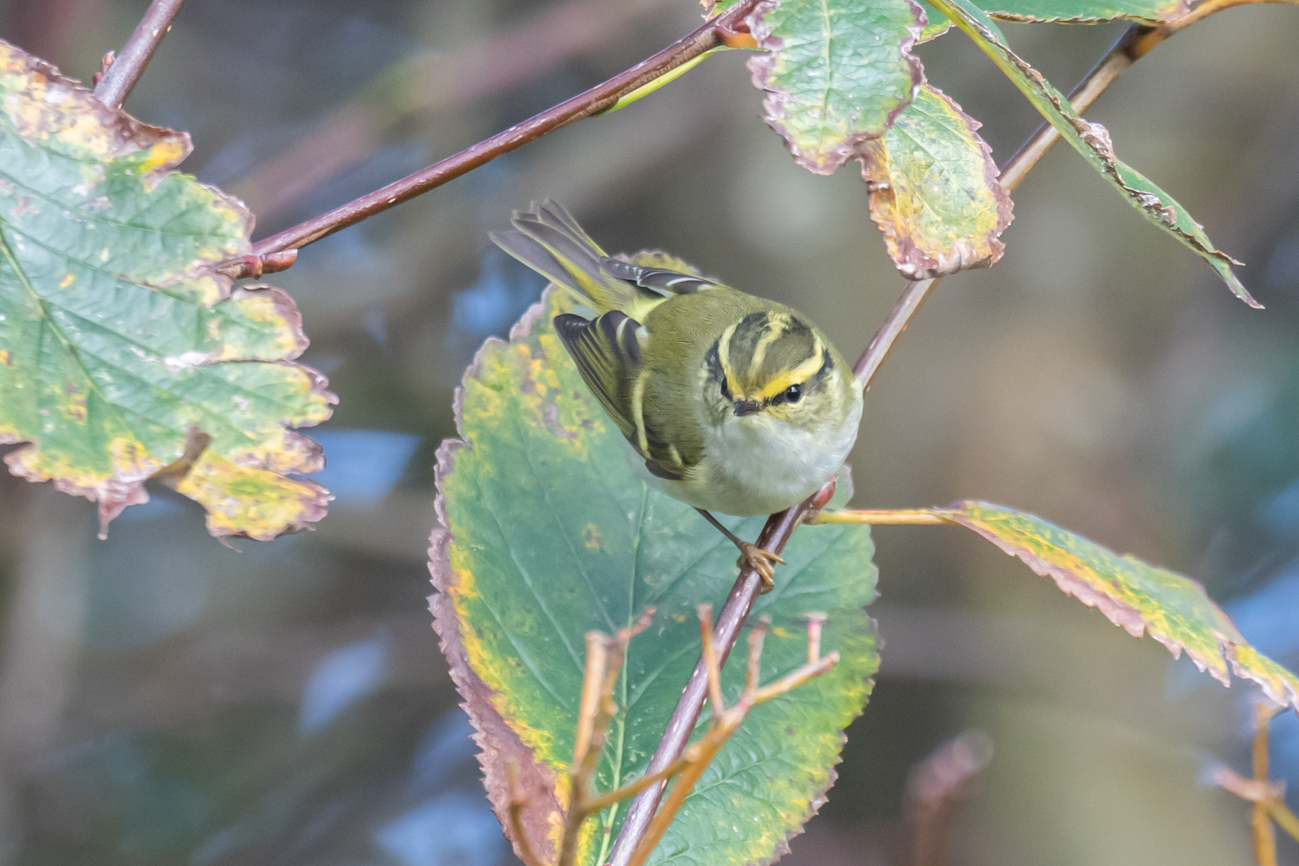A quieter week on Shetland this year, dominated by cold north-westerly winds and regular rain. Andy Last and I based ourselves at Wethersta on Mainland, having stayed on Unst for the last couple of years, and went slightly later in the year, arriving on 8th October, to mix things up a bit.
In terms of species seen it was a rather front-loaded week, with some good birds in the first few days. In the second half of our stay, the winds swung around to the south-west and we hardly saw a migrant bird. It was quite tough going. Our total of 83 species on Shetland in a week is our lowest by some distance and reflects the lack of common migrants. What was more surprising was the lack of birders that we encountered. It was nice to bump into Roger Wyatt, Jim Hutchins and Ewan Urquhart at various points, but on a daily basis we hardly saw anyone all week!

Warbler Wonderland
The main focus of our efforts was finding migrant landbirds. We spent time, much time, looking at trees. Some we seemed to get to know on an individual basis.


There were a few Barred Warblers about. This bird was at Cullivoe on Yell:

The huge dump of Yellow-browed Warblers that occurred in late-September had mostly moved through by the time that we arrived. This Yellow-browed Warbler was at Valyie on Unst:

Yellow-browed Warblers often provide the sound of Shetland in autumn. This calling bird was at Kergord:
There was a nice selection of phylloscopus warblers present. This Arctic Warbler was in the Burn of Njugalswater, near Lerwick:

This Greenish Warbler was in the sycamores behind the house at Valyie on Unst:

It was great to hear the Greenish Warbler calling:
But the best of all the phylloscopus warblers, and in my mind one of the best birds of all, was the Pallas’s Warbler at Swining. Feeding low down, and calling occasionally, this bird displayed all of its fabulous features: the crown stripe and bright yellow supercillia, the double wing bars and the lemon-yellow rump. All packed into a tiny green and white phylloscopus gem:


Show me the stripes!

When you see a Pallas’s Warbler this well, you know that you’ve had a good autumn:

Not all of the warblers that we saw were green, white and stripey. I was scanning through the crop field at Valyie on Unst, when an unstreaked acrocephalus warbler began bounding through the crop towards me. Having spent a full eight hours trying to pin down the identification of what turned out to be a very elusive Blyth’s Reed Warbler in the very same field in 2022, it felt like history was repeating itself in front of me. However, this bird had a blindingly white throat, a dark crown, a short bill and a long primary projection: it was the Paddyfield Warbler that was last reported three days previously:

In statistical terms, the rarest warbler that we saw was the candidate Central Asian Lesser Whitethroat, halimodendri, at Hunter’s Wood on Unst. We had the pleasure of bumping into Dave Cooper here, who played us his recording of the remarkable tit-like call of this bird.

Shetland is surrounded by sea and we did not entirely neglect the ocean. Below, sea-watching from Eshaness in a freezing sub-zero north-westerly. A constant stream of some 400 Northern Fulmars passed north, 3 Sooty Shearwaters were the highlight:

This adult Great Northern Diver was in the bay at Scousborough. It is moulting out of summer plumage. The bill is also in a transitional state between the black of summer and the grey of winter:

No visit to Shetland would be complete without a picture of a distant vagrant seaduck. This year’s “spot-the-bird” picture involves many Common Eider and a single drake White-winged Scoter, all the way from north-western North America:

“Dude, the whole sky is red and green!”
The phenomenon that will live the longest in the memory, was the aurora borealis on Thursday 10th October. Aware that solar activity was peaking, Andy stepped outside just before 8pm and walked into the remnants of a huge solar storm. As the charged particles from a Coronal Mass Ejection Event funneled into the earth’s magnetic field, they collided with oxygen atoms in the upper atmosphere, making them glow green and red.
Andy ran back into the house, shouting the immortal words “Dude, the whole sky is red and green!” I ran outside and nearly fell over. A incredible aurora was playing out above our heads. The colours were clear to the naked eye and intense. A huge red bridge spanned the sky from the northern horizon to the south. Either side of the red bridge, the sky was glowing green:

We staggered around, mouths open. As we watched, the colours changed and moved, but red remained dominant:


Having always assumed that the colours in photographs of the aurora were exaggerated by the camera, it was astounding to see such colours with the naked eye. It was a truly incredible experience and only ended when the sky clouded over, but will be remembered forever.
Our eBird trip report of everything that we saw on Shetland, plus some birding near Aberdeen on the way north, is here.
